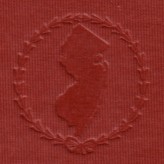 |  |  |
|
| ||
 |  |  |
 |  |  |
|
| ||
 |  |  |
|
|
By Frank R. Stockton
Originally published in 1896
This Web version, edited by GET NJ, COPYRIGHT 2003
IT will always be a source of commendable pride to the people of New Jersey, that their State was never backward in the political, social, or mechanical progress of this country. In fact, several of the most important steps in great movements for popular good have been made upon the soil of the State. Among the claims to preeminence which New Jersey can make in this respect is the claim that the first telegraphic message that was ever transmitted through a wire was sent at the Iron Works at Speedwell, near Morristown, at which place Professor Morse and Mr. Vail, son of the proprietor of the works, were making I experiments with the telegraph. The first public message was sent more than six years later from Washington to Baltimore; but the message at Speedwell stands first, in the point of priority, of all the dispatches by magnetic telegraph which the world has known.
When Professor Morse conceived the idea of communicating between distant points by means of electricity, he was not able to carry out experiments for himself, and having made the acquaintance of Alfred Vail, son of the proprietor or the Iron Works at Speedwell, he gave up his business as a portrait painter and went to Speedwell, where he and Mr. Vail worked hard in experimenting with the new invention. At last, when they thought they had brought it to such a point that they could make practical use of it, they determined to try to send a message through three miles of wire. If that could be done, they believed they could send one to any distance desirable.
Currents of electricity had been sent through long lengths of wire by Mr. Morse in previous experiments, but in these cases nothing more was attempted than signals; no words or message had been sent, and the proposed experiment, therefore, was of great importance. Its success or failure meant success or failure to the magnetic telegraph.
The upper story of a house on the grounds of the Iron Works was one very large room, and round the walls of this they stretched their three miles of wire, until the room was encircled by lines of wire, one above another, but nowhere touching. At one end of this wire was placed a telegraphic instrument, and at the other, another; and with great anxiety, although with strong faith in the success of their work, Mr. Vail sent to Mr. Morse the first real telegraphic message, which ran thus: "A patient waiter is no loser."
The house in which this first message was sent is still standing, near the Whippany River, not far out of Morristown. Alfred Vail and Mr. Morse, assisted by the advice of Professor Joseph Henry, superintendent of the Smithsonian Institution at Washington, continued to work upon the telegraph at Speedwell; and as Mr. Vail furnished the capital, and did a great deal of the most important mechanical work, a large portion of the credit for this wonderful invention is due to him; and the whole system of telegraphy which now encircles and animates the world may be said to have sprung from the Iron Works near Morristown.
Another great invention, as important as the telegraph, made its first appearance before the world in New Jersey. In the frozen waters about the North Pole, on the rivers of Africa, in the seas of China and Japan, on the stormy ocean about Cape Horn, and in almost all navigable waters of the world, are steamboats and steamships,-floating palaces on rivers and lakes, steam yachts and great Atlantic liners, swift war cruisers and line-of-battle ships like floating forts of iron and steel; but the first vessel which was ever propelled by steam paddled its way along the Delaware River, and was made in New Jersey.
In 1787 John Fitch, who was a native of Connecticut, but who lived at that time in Trenton, N.J., where he had been a clock maker and manufacturer of arms, constructed a boat which was moved through the water by means of a steam engine on board. He had long been working on this invention, making experiments, and endeavoring to obtain assistance from people with money. He had applied to Congress to give him the exclusive right to the great results of his work if he should be successful; but this aid was refused.
New Jersey, Delaware, and Pennsylvania, however, gave him the right for fourteen years to propel vessels upon the waters of those States; and thus encouraged he built the first steamboat. This little vessel was imperfect in many ways, and its highest speed was four miles an hour; but still it was a steamboat, and it was the first that man had ever seen. Of course, it attracted a good deal of attention; and after it had been proved that it could move without sails or oars, and that it was not dangerous, people began to believe in it and a steamboat company was organized by Fitch. Another boat was built which carried passengers who paid their fare, and afterwards a larger boat was constructed, in the hope that a good passenger traffic might be established.
| Next |
| Main Menu |

|

|
UrbanTimes.com |